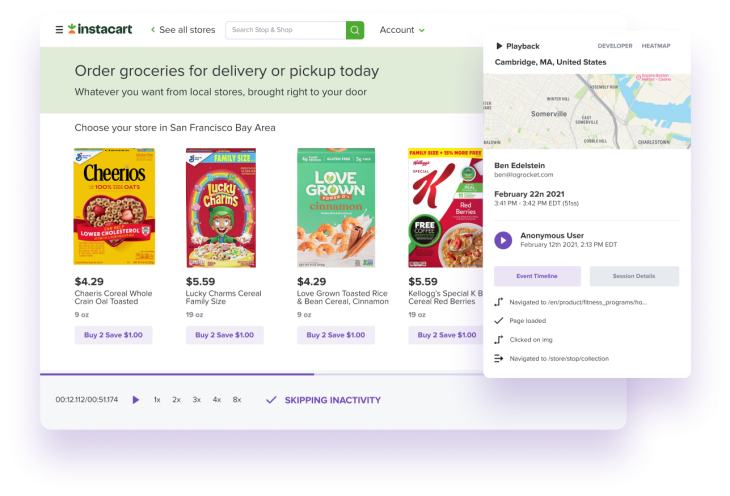Retailers and other businesses have been collecting and analyzing customer data to fine-tune their strategies since the early twentieth century. The widespread use of computers in the 1980s, along with the overall advancement of technology, led to the development of various data mining and statistical analysis tools. These were designed to assist businesses in achieving their goals.

Since then, technology companies have heavily relied on customer analytics as a method to gain a competitive edge in the constantly changing market. Moreover, customer insights have been pivotal in sparking innovation by assisting companies in identifying market gaps and fulfilling their customers’ unmet needs.
In this article, we will explore the intricacies of customer analytics.
Customer analytics refers to the process of collecting data from various customer sources and analyzing it to understand customers’ behaviors, buying habits, and lifestyle preferences throughout the customer journey. Companies utilize these insights to retain, engage, attract, and identify potential customers.
A primary goal of customer analytics is to assist product teams in making data-driven decisions that improve the customer experience throughout their journey. This drives business growth.
Understanding the patterns of customer behaviors and preferences allows businesses to identify opportunities to improve their products, services, and marketing strategies.
Customer analytics are especially important in industries like healthcare and ecommerce. In these sectors, they are utilized to identify patient groups that are likely to develop certain health conditions and to comprehend customer browsing and buying behavior to personalize online shopping experiences.
Whether you’re managing a healthcare product or an ecommerce platform, analytics play a crucial role at various stages of a customer’s interaction with the product. Customer analytics offer a data-driven approach to maturing and scaling the product based on facts, not assumptions.
What are some examples of areas that rely heavily on customer data? Product managers and businesses often use customer analytics to:
A product manager, with the help of customer analytics, can unearth valuable insights into what the customers need. They monitor data points like customer behavior, feedback surveys, product usage, and customer support interactions.
By analyzing these data points, they can generate ideas for new features and functionalities to enhance customer satisfaction and improve key metrics like retention and acquisition.
Product usage is a crucial metric that provides insights into how customers interact with the product. You can leverage customer analytics to track key metrics, such as time spent on the product, frequency of usage, features used, and the adoption rate of new features.
Analyzing these metrics helps you gauge the overall product experience and its resonance with customers.
By monitoring customer pain points across various touchpoints, such as product usage, customer support, and feedback, you can uncover patterns in customer behavior, including frequent abandonment of particular features or aspects of the product that users find challenging or unsatisfactory. These insights help businesses better understand and address their customers’ needs.
Understanding customer behavior and preferences is crucial in identifying patterns that lead to customer churn. Product managers in all industries leverage customer analytics to track metrics such as customer satisfaction scores, churn rate, and customer lifetime value. You can also monitor customer interactions across various touchpoints to identify and rectify bottlenecks.
Tracking metrics related to customer retention can significantly reduce the risk of churn and assist in developing effective retention and acquisition strategies.
It’s a good practice to consistently analyze customer feedback and reviews by tracking key KPIs such as Net Promoter Score (NPS), Customer Satisfaction Score (CSAT), and Customer Effort Score (CES). Monitoring these metrics allows the product team to continuously track and improve customer satisfaction, leading to increased customer loyalty and product growth.
Customer journey analytics refers to the process of collecting and analyzing user data to optimize the customer’s overall experience with your product. This spans from their first touchpoint with the application to conversion and beyond.
Analyzing and mapping the customer journey allows the product team to identify pain points and create a seamless experience. Specific benefits of using customer journey analytics include:
Customer experience analytics is a crucial aspect of customer analytics. It enables businesses to collect and analyze customer interactions with their web and mobile applications. By analyzing data on product services, customer interactions, and various channels, businesses can identify areas for improvement and optimize product features that better meet customers’ needs.
In addition, customer experience analytics provide key metrics such as usage, stickiness, time to value, engagement, and retention. These can be used to improve product performance. Armed with this knowledge, you can devise a product-led growth strategy that enhances user onboarding and increases goal completion rates.
By utilizing customer experience data, businesses can understand customer preferences, drive product growth, and scale up their operations.
When developing and managing a product, it’s crucial to establish a process for collecting and analyzing customer data.
There is no one-size-fits-all approach to customer data analytics, but the following steps serve as a solid framework to help you get started:
Before you start collecting customer data, it’s important to establish clear objectives and goals. This will help you identify the questions you want to ask to reveal opportunities to improve the customer experience.
One common approach among product teams is to use objectives and key results (OKRs) to collectively determine objectives and assign them to team members.
Analyze various sources of customer data. Consider customer feedback, surveys, CRM, and other relevant channels. Establishing clear objectives makes choosing the appropriate resources and disregarding irrelevant ones much easier.
Categorize your data in a way that makes it easy to analyze using any tool or application. It should not be a manual process.
While SQL Database, Microsoft Excel, and Google Sheets have been popular and traditional methods, newer tools like Tableau, Amplitude, LogRocket, and Mixpanel offer superior capabilities for efficient data storage and categorization.
Whenever possible, use enterprisewide, widely adopted analytical tools to identify patterns and trends rather than relying on manual effort.
By analyzing patterns and insights, you can easily discover which areas of the product, customer experience, and overall growth strategy need improvement.
An essential step in creating a data-driven product is using the insights gained from analyzing the data to drive product development through action. This process involves formulating strategies and action plans that cater to changes in the product, customer experience, business strategy, and product growth direction.
Your ability to act on customer insights depends on your willingness to quickly pivot and adapt your product and strategy according to changing requirements. This practice involves regularly analyzing customer insights and making decisions based on emerging data and trends.
There are numerous customer data analytics tools available in the market that help companies better understand their customers’ behaviors and preferences. Each tool has unique capabilities and features that make them suitable for specific purposes.
The right tool for your business will depend on your specific needs and objectives. Let’s review a few of the most useful and popular customer data analytics tools on the market:
LogRocket is a comprehensive product analytics tool that enables businesses to understand customer experiences on their web applications. Its key features include:
LogRocket’s session replay feature is particularly useful for observing user behaviors and understanding how customers interact with your app. Here’s an example of this feature in action on the Instacart website:

LogRocket offers a holistic approach to product analytics, providing teams with actionable insights to improve user experiences and drive product growth. By combining both qualitative and quantitative data, LogRocket provides a complete picture of the user experience, enabling you to make data-driven decisions with confidence.
LogRocket stands out from the crowd by providing both qualitative and quantitative insights, making it an excellent choice for businesses seeking to optimize their product experiences and drive growth.
Google Analytics is a popular web analytics service offered by Google. It tracks website traffic, giving insights about user behavior on your site.
GA provides data on session duration, bounce rates, pages per session, and many more metrics that can help you understand how users are interacting with your website.
Mixpanel is an advanced analytics platform that allows businesses to analyze user behavior across sites and apps. With its event-based tracking, it helps businesses understand every user’s journey.
Mixpanel also offers A/B testing to help optimize the user experience.
Amplitude is a product analytics software that helps businesses to track and optimize the user journey. Amplitude provides insights into user behavior, allowing businesses to make data-driven decisions about product development.
Customer analytics provide valuable insights into customers’ needs and behaviors. Therefore, employing the best tools, applications, and practices is essential to driving product success, growth, and scalability.
Analyzing customer data is a powerful way to create new products and services, enhance the customer journey, personalize the customer experience, optimize pricing and promotions, and improve products and services to gain a competitive edge.
Featured image source: IconScout

LogRocket identifies friction points in the user experience so you can make informed decisions about product and design changes that must happen to hit your goals.
With LogRocket, you can understand the scope of the issues affecting your product and prioritize the changes that need to be made. LogRocket simplifies workflows by allowing Engineering, Product, UX, and Design teams to work from the same data as you, eliminating any confusion about what needs to be done.
Get your teams on the same page — try LogRocket today.

A practical five minute revenue estimation method to help product managers compare ideas, drop low impact features, and prioritize smarter.

A practical guide for PMs who want to stop being bottlenecks, delegate smarter, and lead teams effectively with a clear ownership framework.

Stop letting unreliable data block features. Treat data as inventory to track quality, ownership, and ship with confidence.

Learn why slide decks slow teams down and explore better tools like whiteboards, PRDs, and prototypes to improve collaboration and alignment.